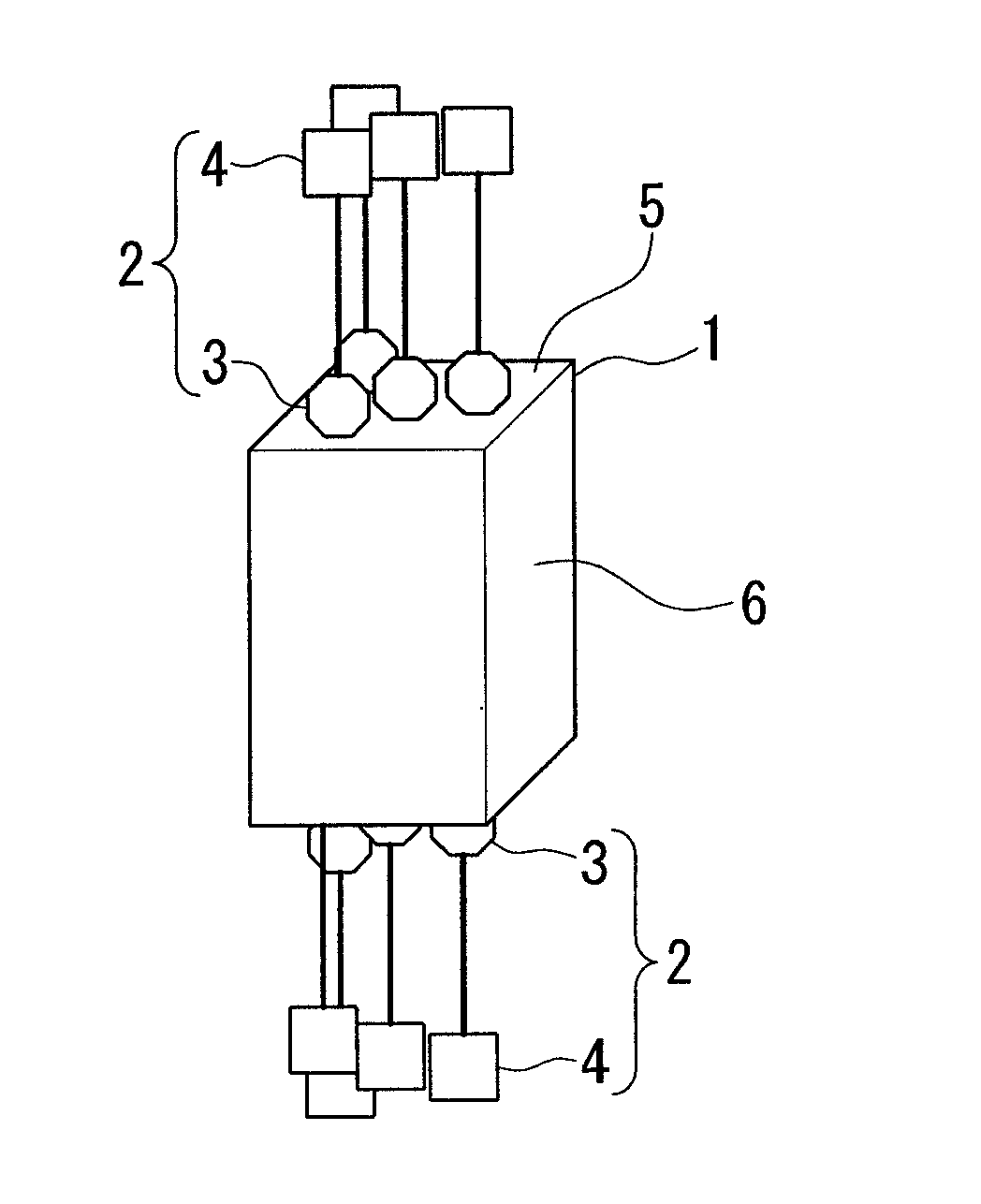Nanostructure and manufacturing method for same
a manufacturing method and nanotechnology, applied in the field of nanostructure, can solve the problems of high manufacturing cost, inability to provide high yield, and manufacturing methods in prior arts based on two-dimensional processes, and achieve the effect of low cos
- Summary
- Abstract
- Description
- Claims
- Application Information
AI Technical Summary
Benefits of technology
Problems solved by technology
Method used
Image
Examples
example 1
[0070] Decahedral titanium oxide particles shown in FIG. 4 were synthesized by a CVD method using titanium tetrachloride as a raw material. Titanium oxide belongs to an tetragonal system, and the crystal surface forming a decahedron comprises square faces equivalent to the (001) plane and trapezoidal faces equivalent to the (101) plane. In the following description, the term (101) planes represents crystal faces equivalent to the (101) plane. Average particle size of the decahedral titanium oxide was 100 nm.
[0071] Next, the decahedral titanium oxide particles were dispersed in a 2-propanol solution containing gold chloride acid. After photo radiation of the solution using a high pressure mercury vapor lamp, about 20% of gold was photo-deposited on the surface of the decahedral titanium oxide particles. A few drops of solution were dried on a slide glass, and were subsequently observed by a Scanning Electron Microscope as shown in FIG. 5.
[0072] The result of SEM observation shows t...
example 2
[0073] Silica particles having spherical shapes of approximately 500 nm in seize were prepared from a commercial product. The surface of the silica particles were modified with silane coupling agents (3-mercaptopropyltrimethoxysilane). After the modification, the methoxy groups of the silane coupling agents were connected to the silica surfaces, and the silica particles had mercapto groups on their surfaces.
[0074] Next, the silica particles were added to the solution in which gold-bearing decahedral titanium oxide particles prepared in the Example 1 were dispersed. Nanostructures were formed after agitating the solution. A schematic drawing and SEM image of the nanostructure obtained after the agitation are shown in FIGS. 6A and B.
[0075] The result of SEM observation confirmed that spherical silica particles are connected to the (101) planes of the decahedral titanium oxide particles. Thus the formation of the nanostructure can be explained by the selective bonding of mercapto gro...
PUM
| Property | Measurement | Unit |
|---|---|---|
| size | aaaaa | aaaaa |
| size | aaaaa | aaaaa |
| particle size | aaaaa | aaaaa |
Abstract
Description
Claims
Application Information
 Login to View More
Login to View More - R&D
- Intellectual Property
- Life Sciences
- Materials
- Tech Scout
- Unparalleled Data Quality
- Higher Quality Content
- 60% Fewer Hallucinations
Browse by: Latest US Patents, China's latest patents, Technical Efficacy Thesaurus, Application Domain, Technology Topic, Popular Technical Reports.
© 2025 PatSnap. All rights reserved.Legal|Privacy policy|Modern Slavery Act Transparency Statement|Sitemap|About US| Contact US: help@patsnap.com



